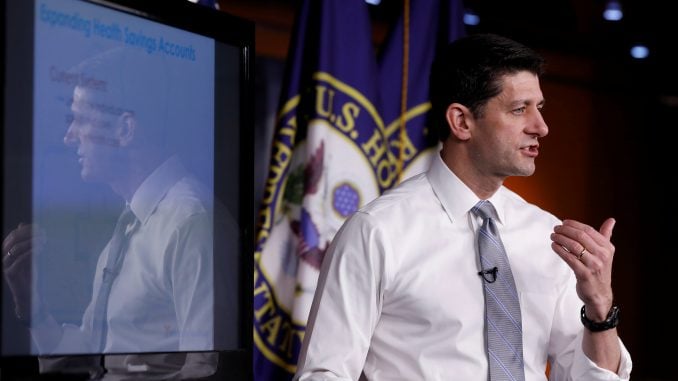
Based on initial news reports, a normal person would conclude that the Republican alternative to repeal and replace Obamacare was a total disaster of biblical proportions. Mainstream news folks were apoplectic. Democrats were scathing. Even members of the Republican Party were pronouncing the bill dead on arrival.What the heck is going on here?Speaker Paul Ryan and Health and Human Services Secretary Tom Price (who most recently was chairman of the House Budget Committee) speak the same language. And an archaic and byzantine language it is. Thus, the three stages to replacing Obamacare:Stage 1. The core bill is designed primarily to repeal major provisions of Obamacare with an eye to getting through Senate rules to avoid an extended filibuster by using the budget reconciliation process and avoiding the “Byrd Rule.”Stage 2. Once Price has had a chance to review the over 1,400 new federal regulations put in place by the Obama administration, bills will be introduced to determine which will be kept (not many) and which will be jettisoned (most of them).Expect this bill later this spring.Stage 3. A push for broader, non-budget policies most Republicans want to see passed as part of this repeal-and-replacement effort, such as selling health insurance across state lines, returning Medicaid funds and flexibility to the states, and enhanced medical legal reforms.Expect this bill perhaps during the summer.Just for educational and edification purposes, here are somewhat pedestrian translations of what the budget reconciliation process and the “Byrd Rule” are, taken from Congressional Research Service reports (citations omitted):Budget Reconciliation: “The budget reconciliation process… establishes special procedures that have allowed the Senate to get to a vote on passage on budget reconciliation legislation without first having to demonstrate super-majority support (i.e., without invoking cloture with a three-fifths vote).”Translation:This is a way to get around the painful filibuster rules of the Senate so the majority party (Republicans now) can pass spending and tax law by simple majority vote. Republicans have 52 senators. Democrats have 46, plus two Independents who caucus with them. You do the math.The Byrd Rule: “…the basic purposes of the amendment were to protect the effectiveness of the reconciliation process (by excluding extraneous matter…) and to preserve the deliberative character of the Senate (by excluding from consideration under expedited procedures legislative matters not central to deficit reduction that should be debated under regular procedures).Translation: “We just don’t want to deal with a bunch of garbage every time we consider a tax and spending package! Also, anything that adds to the deficit without being offset elsewhere is out of order!”So far, every senator, including even former Majority Leader Harry Reid, has honored this unique Senate rule of procedure.Ryan and Price know what they are doing. Both have been House Budget Committee chairs and know the process of budget reconciliation far better than the average congressmen or senator.The knee-jerk reactions of Sen. Rand Paul and other Freedom Caucus members flies in the face of the fact that Mick Mulvaney, former fellow Freedom Caucus member, is now budget director under President Donald Trump.If Mick Mulvaney is on board with this strategy, perhaps his former colleagues should listen to him.That being said, advocating Health Savings Accounts as a panacea for providing health insurance is not a practical solution for everyone. For one thing, 50 percent of all taxpayers don’t have enough income to pay federal income tax to begin with, in which case receiving a tax credit or tax deduction to buy a HSA is virtually worthless unless converted into a direct payment along the lines of an Earned Income Tax Credit (EITC), where people who don’t earn enough for that tax credit receive a direct check from Washington for the amount owed.In other words, that tax credit becomes a direct subsidy just like the ACA subsidies that now exist under Obamacare for non-Medicaid-eligible citizens.A better move would be flattening the tax code’s treatment of health insurance between business and individuals. There should be a basic level of tax deductibility for catastrophic health insurance plans with wellness care, preventive health care, and dental care included.Beyond that, a company or individual could purchase any level of health insurance they want. They just wouldn’t be able to deduct those costs as a cost of doing business.There’s really only one way to see health insurance premiums drop precipitously.Americans can eat healthy, stop smoking, stop excessive use of alcohol, and exercise at least 30 minutes every day. We would never have to worry about “Obamacare,” “Trumpcare,” or health care reform ever again.Frank Hill is the director of The Institute for the Public Trust in Raleigh.



